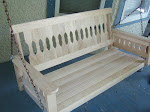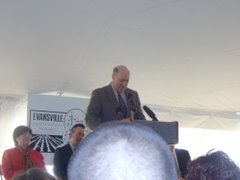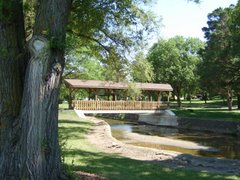Wednesday, July 11, 2012
Mailbag: Vinehout writes re WRS Retirement System
Retirement System Gets High Grades
July 11, 2012 ~ Volume 6 Issue 27
Can you tell me what is happening with the state retirement system, the WRS?” asked a worried Eau Claire man.
means grocery money for many retired people. There has been a great deal of talk about changing the system or eliminating it entirely.
Two recent reports should put to bed any of that talk.
The reports show the WRS is the best funded in the United States, provides half the taxpayer contributions of the national average and uses a unique ‘risk sharing’ method to keep funding stable and taxpayer costs low while delivering promised benefits.
First, the nonpartisan Pew Center on States found Wisconsin is the only state in the union with enough money set aside to meet guarantees made to workers. The study ranked Wisconsin as a ‘solid performer’ in both pensions and retiree health care – the only state to receive such a designation.
Second, the state Department of Employee Trust Funds released a long awaited report ordered by the Governor that recommended no changes in the current retirement system.
“The Wisconsin Retirement System is an efficient and sustainable retirement system,” began the report which was conducted by an independent firm.
Part of the reason for the fund’s success, according to the report released last week, is the combination of cost sharing and risk sharing. Workers pay half of the contributions to the system – currently almost 6% of their salary.
The unique ‘risk sharing’ structure allows participants to benefit from good times but also to lose in bad times. The report mentions that retirees’ pensions were reduced collectively by over $3 billion in the past few years. Additionally, the contributions of active employees are reviewed each year and are adjusted up or down depending on the performance of the market.
The study found benefit levels in Wisconsin are lower than most public plans; members shoulder most of the risk of the plan; the cost of the plan has decreased to taxpayers and the flexibility of benefits paid out has allowed the plan to remain solvent despite the economic downturn.
Those of us over age fifty worry about retirement income. For many farmers or small business owners, retirement means selling the farm/business - including passing it on to the next generation. For larger private companies, employers may offer some form of contribution to a worker’s own retirement account.
Many believe the “Cadillac plan” offered to public employees provides overly generous benefits they will never see. But the reality is the median benefit is about $21,000 a year. Not bad; but certainly not a “Cadillac”.
In addition, state law forbids ever offering a cost of living adjustment to retirees. Similar to many private sector plans, the amount paid out to retirees varies with market performance.
Making sure retirees can buy groceries is important for Wisconsin’s economy. In taxes paid and purchases made, WRS retirees supported 35,000 jobs, lowered the unemployment rate by 1.6% and sent half a billion dollars to government coffers in taxes paid. Yes, they all pay taxes just like the rest of us.
At the heart of the WRS are the hard working folks at the State of Wisconsin Investment Board. This agency oversees all of the investments of the state of Wisconsin, including the retirement funds. Over $90 billion in assets are managed to bring the best return to the taxpayers of Wisconsin. The retirement fund is the largest but many other parts of state government involve funds under SWIB's highly experienced financial investors.
It is this professional management and large pool of assets that gives WRS an edge over other types of investments. The ETF study shows both taxpayers and workers benefit from sharing risk with a large pool of employees which brings higher returns at lower administrative costs.
The reports are so positive some, including Senator Dave Hanson, are now talking about opening up the system to private employers.
“That’s a great idea,” a small business owner told me. “Please keep me informed.”
I will do just that.
* * * * *
If you’d like to read the reports the Pew report can be found at The Pew Center on the States
And the ETF report can be found at the Employee Trust Fund website
Click here to download the PDF
Subscribe to:
Post Comments (Atom)






























No comments:
Post a Comment